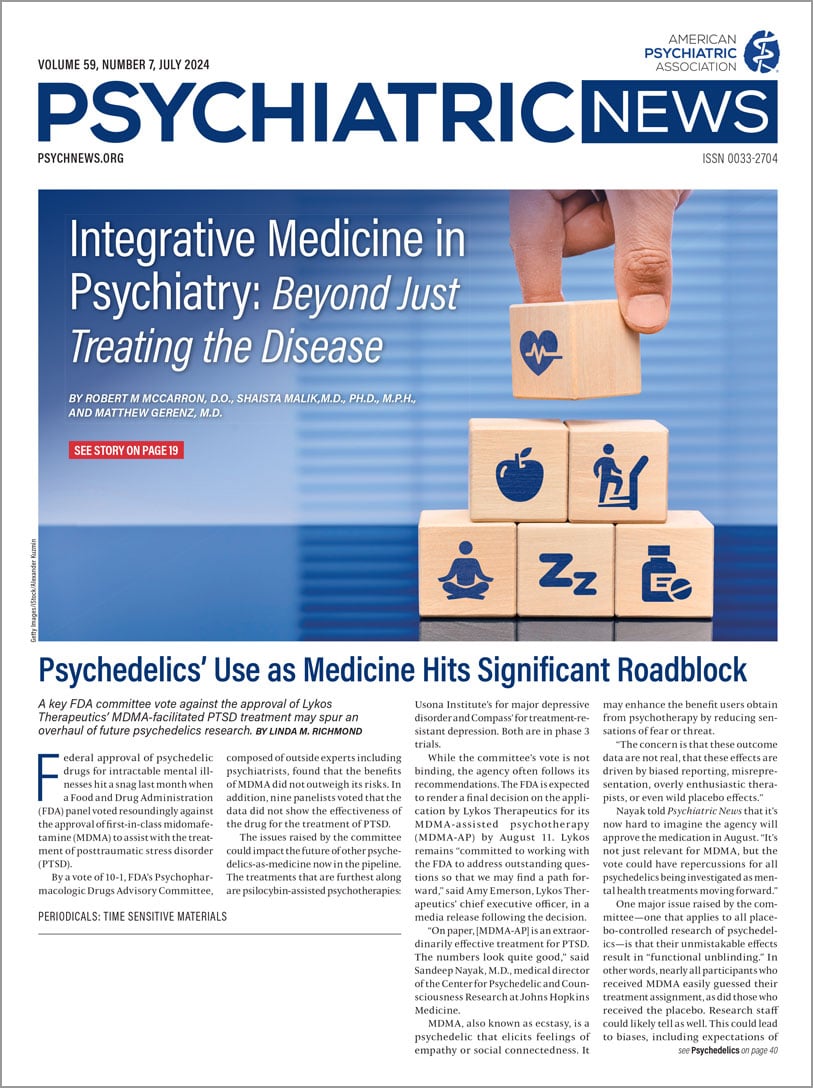Irritability and disruptive behaviors are some of the most common reasons that youth are referred to child and adolescent psychiatrists. When kids talk about these behaviors, they often refer to them as “a storm in their brains,” said Janet Wozniak, M.D., at APA’s 2024 Annual Meeting.
Yet there remains a gap in knowledge on how to confidently assess and diagnose children with irritability, emotional dysregulation, and disruptive behaviors. Often, she explained, the symptoms children exhibit are attributed to psychosocial situations or are assumed by parents and clinicians to resolve as part of the child’s natural development.
“These minor symptoms can start to insidiously grow, and unless somebody is taking note of them, the child may go unattended to in terms of psychiatric diagnosis,” said Wozniak, the director of the Pediatric Bipolar Disorder Research Program at Massachusetts General Hospital.
The best way to treat irritability and disruptive behavior is to start with accurate diagnoses, Wozniak explained. Irritability is a symptom of numerous illnesses, including depression, bipolar disorder, attention-deficit/hyperactivity disorder, disruptive mood dysregulation disorder, oppositional defiant disorder, conduct disorder, and autism. To further complicate the diagnostic process, many young patients have comorbid illnesses. “Comorbidity is the rule, not the exception,” Wozniak said.
The presentation of irritability also differs significantly between disorders. In anxiety, for example, irritability may look like the patient is easily bothered or annoyed. In oppositional defiant disorder, irritability is more often seen as a hot temper. In bipolar disorder, irritability can be extreme, resulting in explosive and violent outbursts.
Wozniak often must explain to parents that there is no single test that can lead to a secure diagnosis. “The test for these problems is for me to ask a lot of questions of the parent and child; observe them; and put that together with what I know about medicine, psychiatry, and development, and then make a diagnosis and a treatment match,” she said. “There’s nothing mysterious about it.”
Throughout her talk, Wozniak acknowledged that varying degrees of irritability and disruptive behaviors are normal aspects of childhood development. But when these symptoms become extreme or disruptive to everyday life, they may suggest an underlying illness.
In childhood depression, for example, Wozniak said irritability can be excessive and disrupt regular activities. Though the diagnostic criterion for depression is the same for both children and adults, children with depression often present as especially irritable, grumpy, easily annoyed, or bored.
She emphasized the importance of determining whether patients with depression have any past or current symptoms of mania, because these patients often switch to bipolar disorder. Bipolar disorder is present in about 1% to 3% of children in the country, Wozniak said.
“That’s a sliver of all the children, but it translates to millions of children,” she said. “They’re the ones who often filter into our clinics because they have such significant problems.”
Similar to depression, the diagnostic criterion for mania is the same for adults and children, but there are developmental considerations to keep in mind. In Wozniak’s clinic, irritability is the most common and impairing complaint from parents of children with bipolar disorder. Irritability in manic children is usually severe, with patients exhibiting dangerous outbursts that are usually daily and long lasting, at between 30 and 60 minutes or even longer.
Often, conduct disorder is comorbid with bipolar disorder, Wozniak said. Children with conduct disorder don’t just misbehave like an average child. The misbehavior is extreme, and Wozniak called it “pre-sociopathy.” These children exhibit aggression, destruction, and deceitfulness, and they engage in serious rule violations. There are no treatments for conduct disorder, but treating the grandiosity, rage, and impulsivity associated with bipolar disorder, if the two illnesses are comorbid, can decrease the behaviors caused by conduct disorder, she said.
In terms of treatment, Wozniak said rational, combined pharmacotherapy is a good goal for these patients. Few medicines can treat multiple diagnoses or symptoms at the same time. “When we do the risk-benefit analysis of any treatment, including more than one medication at a time, you need to factor in the risk of not treating.” That analysis must include an assessment of what the outcome could be if these children aren’t treated, because many studies show that the symptoms persist and can get worse as the children grow into adults.
Throughout her talk, Wozniak pointed out that children with these disorders grow up to be adults with severe mental illness. Among the children with bipolar disorder under the age of 12 who were referred to her clinic, the average age of presentation is about age 8, she said, but the age of onset is 4.5, according to parents.
“What often happens is these children will have tremendous problems in their preschool years, but parents are told that it is normal development or that they need to improve their parenting,” she said.
“You might think that treating an 8-year-old is very early in the onset of the illness,” she continued. “But they’ve already been having problems for some period of time. For certain groups of these bipolar kids who grow up to be bipolar adults, the preschool years are a time that we have to look at more carefully.” ■
Resource
The slides from Wozniak’s presentation can be downloaded
here.
